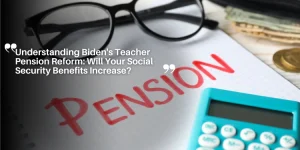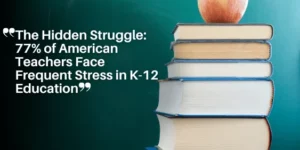Netflix’s ‘Adolescence’ Sparks Critical Dialogue: A Teacher’s Guide to Identifying At-Risk Students
Overview of the Netflix Series ‘Adolescence’ 🎬
Netflix’s gripping series, “Adolescence,” opens with a shocking scene: 13-year-old Jamie is arrested for the murder of his female classmate.
Jamie’s innocent appearance and background seemingly contradict the horrific crime he’s accused of.
This series not only tells Jamie’s story but also triggers a broader conversation about the roles that parents, teachers, and schools play in supporting adolescents.

Examination of Missed Warning Signs in School Settings 🏫
The central question posed by “Adolescence” is particularly relevant to educators: how could warning signs of Jamie’s distress and potential for violence be overlooked? It urges educators to reflect on their roles and effectiveness in observing and addressing students’ emotional struggles.
Despite teachers’ daily interactions with students, warning signs can be missed due to various factors, including a lack of training in social-emotional learning (SEL) and the complexities of adolescent development.
Real Classroom Dynamics and Mental Health Concerns 🧠
Jamie’s story in “Adolescence” resonates because it mirrors real issues in classroom settings.
Adolescents often exhibit emotional distress through subtle changes in behavior that can be misinterpreted or ignored.
Teachers, who are on the front lines, need to be equipped with the skills and resources to identify and support struggling students effectively.
This chapter is a call to action for educators to recognize these signs and intervene promptly, ensuring that schools become safer and more supportive environments for all students.
By understanding the importance of SEL and incorporating it into daily school interactions, educators can make significant strides in improving students’ academic outcomes and mental health.
The conversation sparked by “Adolescence” can be a catalyst for positive change in school policy and culture, ultimately aiming to prevent such tragedies in real life.
The Unique Position of Teachers as First Responders 🦸♀️🦸♂️
Recognizing Emotional Struggles
Teachers are often in a unique position to identify students who may be struggling emotionally.
Unlike parents or pediatricians, teachers interact with students almost daily, allowing them to observe behavioral patterns and notice changes over time.
According to Jennifer Greif Green, a professor in special education at Boston University, teachers can recognize when a student changes because they see them every day over a nine-month period.
This continual interaction provides teachers with critical insights that intermittent check-ups by pediatricians cannot capture.
Comparative Observation 🔍
Teachers also benefit from having a built-in comparative sample of peer behavior, given their access to a class of 20-30 students.
This allows them to discern when an individual’s behavior deviates significantly from the norm. Unlike parents, who see their child within the home context, teachers can spot discrepancies more reliably.
As Green noted, teachers can compare a student to their classmates who are in the same age bracket and context, making it easier to identify anomalies.
The Overlooked Gap 🚧
A significant disconnect exists between elementary and secondary educational approaches to social-emotional development.
In the early years, educators focus on the whole child, integrating foundational social-emotional skills with academic learning.
However, this holistic approach often diminishes as students progress to higher grades. The social and emotional challenges adolescents face become more complex, but the emphasis on social-emotional learning (SEL) tends to wane.
This shift is problematic as it overlooks the growing complexity of students’ mental health needs as they approach adulthood.
By understanding these dynamics, teachers are better equipped to serve as the first line of defense in recognizing and addressing the emotional needs of their students.
This awareness can create a supportive classroom environment that mitigates the issues highlighted in Netflix’s Adolescence, ultimately fostering safer and more nurturing school communities.
Recognizing Warning Signs: What to Look For 🔑
Key Behavioral Changes 🔄
Teachers, due to their daily observation of students, can detect behavioral changes that may indicate emotional distress.
These changes may manifest as a notable shift in attendance patterns, such as a student who was once punctual now frequently arriving late or skipping classes altogether.
Additionally, alterations in academic performance, such as a drop in grades or lack of engagement in class, often signal underlying issues.
Typical Mood Swings vs. Concerning Patterns ⚖️
Adolescents naturally experience mood swings as they navigate the complexities of growing up.
However, differentiating between typical teenage behavior and more concerning patterns requires keen observation.
Typical mood swings are temporary and usually linked to identifiable events like conflicts with friends or school stress.
In contrast, concerning patterns are persistent, intense, and affect various aspects of the student’s life.
Chronic irritability, pervasive sadness, or drastic changes in sleep and eating habits are red flags indicating the need for intervention.
Specific Red Flags 🚨
Certain behaviors warrant immediate attention and possibly professional referral.
These include expressions of hopelessness, preoccupation with death, self-harm, or substance abuse.
Teachers should also be alert to significant changes in social interactions, such as withdrawal from friends, frequent fights, or bullying.
By understanding and identifying these warning signs, teachers can play a pivotal role in supporting students’ emotional well-being and fostering a healthier school environment.
Conclusion 🏫
Teachers are uniquely positioned to observe and intervene when students face emotional or psychological challenges.
By recognizing the warning signs of distress, teachers can serve as first responders to ensure that students receive the support they need.
The lessons drawn from Adolescence call for greater emphasis on social-emotional learning and mental health in education, encouraging educators to take a proactive role in fostering both academic success and emotional well-being.
Building Effective School-Family Partnerships 🤝🏫
The Importance of Multi-Tiered Support Systems That Include Parents and Guardians 🛠️
One of the crucial factors in supporting adolescents is the effective partnership between schools and families.
A multi-tiered support system encompassing teachers, school personnel, and parents can significantly boost the emotional and academic health of students.
When these groups collaborate, students benefit from a safety net that spans both their home and school environments.
Communicating regularly with parents about important developments and concerns regarding their child’s well-being encourages a sense of shared responsibility.
It’s vital that parents feel involved and informed so they can support their children effectively at home.
Strategies for Initiating Difficult Conversations with Families About Student Wellbeing 💬
Initiating difficult conversations with families requires sensitivity and tact. Here are some strategies to help navigate these discussions:
-
Be Transparent and Honest: When discussing sensitive issues, it’s important to be forthright without being confrontational. Use clear and compassionate language to explain your observations and concerns.
-
Offer Support: Provide parents with information about resources and services that can assist their child. Highlighting the school’s commitment to their child’s well-being can foster a collaborative mindset.
-
Encourage Two-Way Communication: Ensure that parents feel heard through attentive listening to their concerns and questions. This encourages trust and strengthens the partnership.
Creating Communication Channels That Respect Family Privacy While Ensuring Student Safety 🔒
| Communication Strategy | Description |
|---|---|
| Confidential Channels | Use secure methods like phone calls or encrypted emails for sensitive discussions. |
| Scheduled Meetings | Arrange regular meetings to respect family time and ensure meaningful conversations. |
| Documentation | Maintain detailed records of communications and agreements to ensure accountability. |
| Respect Boundaries | Avoid overstepping into personal parenting matters while addressing emotional concerns. |
Navigating Difficult Conversations with Students 🗣️
Approaches for Discussing Sensitive Topics 💬
Addressing sensitive topics such as online influences, peer pressure, and mental health requires a considerate approach.
Begin by establishing a supportive, judgment-free environment where students feel comfortable sharing. Ask open-ended questions to understand their perspective.
For example, inquire, “What challenges do you face online?” This approach encourages dialogue and shows you value their experiences.
Use relatable scenarios to discuss peer pressure.
Rather than giving direct advice, present hypothetical situations and ask how they would respond.
This method helps students think critically and prepares them for real-life challenges.
When discussing mental health, normalize the conversation. Highlight that seeking help is a sign of strength, not weakness.
Balancing Approachability and Boundaries ⚖️
Being approachable is vital, but maintaining boundaries is equally important. Clearly communicate your role and limitations as a teacher.
Let students know that while you’re there to support them, you are not a mental health professional.
Establishing this boundary helps to manage expectations and ensures the relationship remains professional.
Create regular check-ins that allow for consistent support without crossing personal boundaries.
For example, schedule brief one-on-one meetings to touch base on their well-being. Encourage students to reach out when needed, but also direct them to appropriate resources.
Involving School Mental Health Professionals 🧑⚕️
Knowing when to involve mental health professionals is crucial.
Some signs that a student needs more specialized help include persistent sadness, drastic changes in behavior, or expressions of self-harm.
When you notice these red flags, refer the student to the school counselor or psychologist.
Communicate your concerns with sensitivity. Explain to the student that involving a professional can provide the support they need.
For instance, say, “I’ve noticed you’re going through a tough time. Talking to our school counselor could really help.”
This approach reinforces that you care about their well-being while directing them to the appropriate resource.
By addressing these critical aspects, teachers can better navigate difficult conversations, fostering a supportive environment where students feel safe and understood.
Conclusion: Teachers as Champions of Emotional Support 🌟
Teachers play a pivotal role in shaping a school culture that prioritizes emotional support.
As the conversation around student mental health continues, educators can lead the charge in creating a holistic and nurturing school environment.
By developing strong partnerships with families, supporting students through challenging conversations, and knowing when to involve professionals, educators ensure that every student can thrive academically and emotionally.
Professional Development and Self-Care for Teachers 🌱📚
Enhancing Skills to Support Troubled Teens 💪
With emotionally charged classrooms becoming more common, educators need robust professional development to support struggling students effectively. Resources like workshops, webinars, and specialized training programs have become invaluable.
Programs such as those developed by the Yale Center for Emotional Intelligence help educators incorporate social-emotional learning (SEL) practices into their classrooms, improving students’ academic achievement and mental health.
Professional development in SEL equips teachers with the tools to recognize and respond to the emotional needs of their students, ultimately fostering a positive and supportive learning environment.
By focusing on empathy, communication, and emotional regulation, educators can better connect with students, creating a space where teens feel heard and understood.
The Importance of Teacher Self-Care 🧘♀️💖
Teaching is rewarding yet emotionally taxing, particularly when dealing with students in distress.
Teachers must prioritize self-care to maintain their well-being and effectiveness.
Adopting a routine that includes relaxing activities, mindfulness practices, and taking mental health days when necessary can replenish a teacher’s emotional reserves.
A healthy teacher is better equipped to support their students.
By setting clear boundaries between work and personal time, teachers can avoid burnout.
Simple practices like deep breathing exercises, outdoor walks, and dedicating time for hobbies can recharge teachers mentally and emotionally.
When teachers feel emotionally balanced, they bring more energy and patience into the classroom, benefiting both themselves and their students.
Building a Support Network Among Colleagues 🤝
A strong support network among teachers can make a significant difference.
Having colleagues to share experiences with and lean on for advice fosters a collaborative environment and reduces the feeling of isolation.
School administrations can facilitate this by encouraging regular check-ins and creating peer support groups.
Collaborating with colleagues creates an opportunity for teachers to learn from one another, exchange ideas, and provide emotional support.
Regular team-building activities or informal gatherings after school can help reduce the pressure of teaching, fostering a sense of camaraderie and shared responsibility.
Investing in professional development and self-care equips teachers with the tools to navigate the complexities of today’s educational landscape, ensuring they can provide the best support for their students and themselves.
Moving Forward: Creating Systemic Change 🔄
Advocating for School-Wide Approaches to Student Mental Health and Wellbeing 🧠💙
Creating systemic change in schools means integrating comprehensive mental health support into the educational framework.
This involves developing policies that prioritize student emotional wellbeing alongside academic success.
Schools should ensure that social-emotional learning (SEL) is deeply embedded in the curriculum, promoting a culture where mental health is openly acknowledged and actively supported.
By addressing mental health systematically, schools can foster a climate where students’ emotional needs are met, making it easier for them to succeed academically.
Policy changes should emphasize the importance of early intervention and create pathways for students to receive the support they need when struggling emotionally or psychologically.
Leveraging the Conversation Sparked by Media Like ‘Adolescence’ for Positive Change 🎥
The Netflix series ‘Adolescence’ has the potential to be a catalyst for meaningful conversations about student mental health.
Educators can harness the series’ impactful storyline to initiate dialogues around the signs of emotional distress and the importance of early intervention.
This discourse should extend to parents and the broader community, fostering an environment of collective responsibility and support.
By utilizing the series as an educational tool, teachers can create discussions in classrooms, encourage open conversations with parents, and advocate for better mental health practices within schools.
The series can serve as a mirror for the challenges faced by teens and spark necessary reforms in mental health care within education.
The Role Teachers Can Play in Shaping School Policy and Culture Around Emotional Support 🏫
Teachers are pivotal in leading the charge for better mental health policies in schools.
Their daily interactions with students position them to advocate for necessary changes. Teachers can:
-
Initiate discussions with school administrators about integrating SEL into regular teaching practices.
-
Participate in committees that create mental health strategies and policies.
-
Advocate for professional development sessions focused on SEL and mental health awareness.
By taking these steps, teachers can ensure that emotional health becomes a foundational element of school policy, benefiting both students and the broader school community.
Conclusion: A Holistic Approach to Education 🌍💡
Moving forward, these initiatives can cultivate a supportive and responsive educational environment, promoting mental health and wellbeing for all students.
Teachers, by prioritizing their own emotional health, advocating for policy changes, and integrating SEL into their classrooms, can create a school culture that not only educates students but also nurtures their emotional and psychological growth, setting them up for success both in and out of the classroom.







